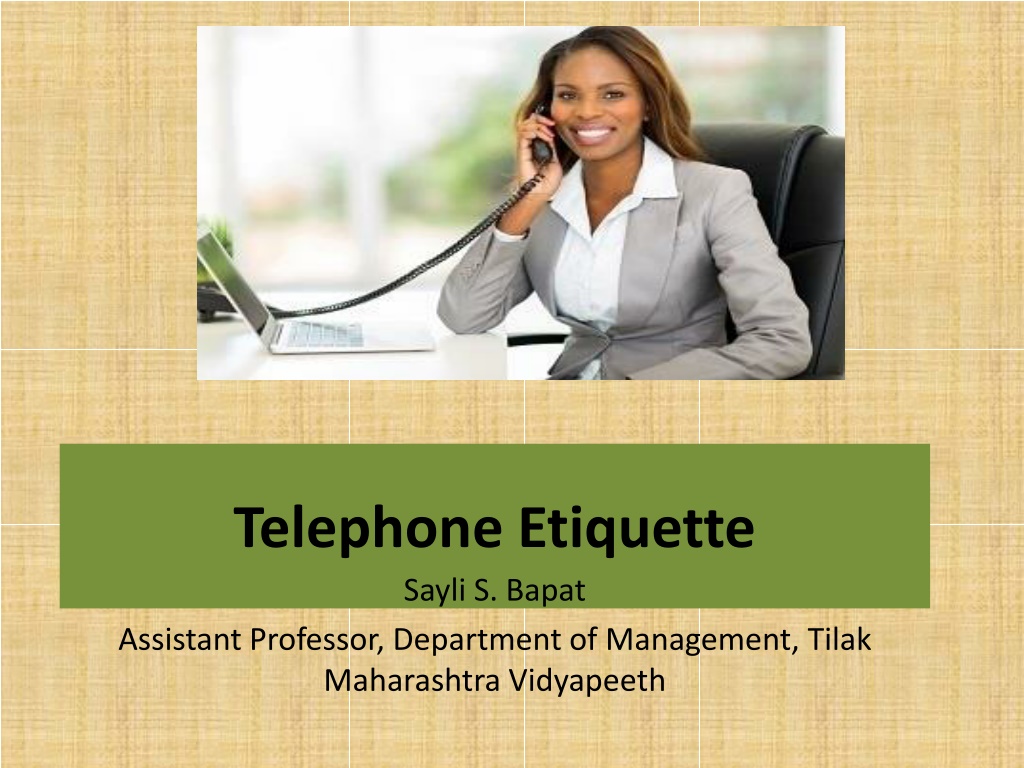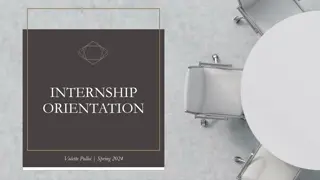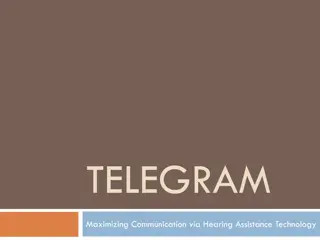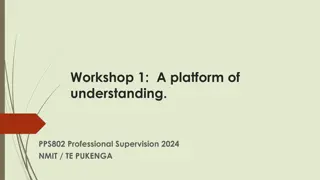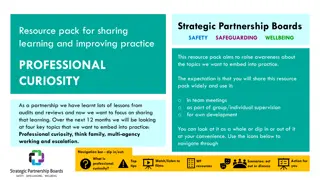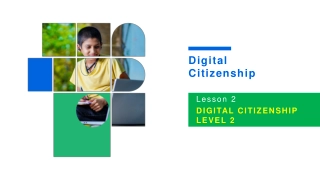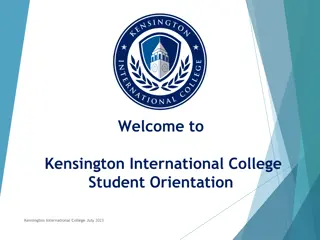Effective Telephone Etiquette for Professional and Personal Calls
Being mindful of how you talk over the phone is essential, whether at work or home. Answer calls promptly with a friendly greeting, introduce yourself, follow a professional calling process, focus on your tone of voice, and handle different call situations with preparedness and courtesy. Prioritize clear communication and professionalism in all phone conversations.
Download Presentation
Please find below an Image/Link to download the presentation.
The content on the website is provided AS IS for your information and personal use only. It may not be sold, licensed, or shared on other websites without obtaining consent from the author. Download presentation by click this link. If you encounter any issues during the download, it is possible that the publisher has removed the file from their server.
- Telephone Etiquette
- Professional Communication
- Phone Call Handling
- Effective Communication
- Business Etiquette
Presentation Transcript
Telephone Etiquette Sayli S. Bapat Assistant Professor, Department of Management, Tilak Maharashtra Vidyapeeth
HOW DO WE TALK??? WHETHER AT OFFICE OR AT HOME... It is important to be fully aware of how we talk or behave over the phone.
Answering the Telephone Pick up the phone in three rings. More than three rings... signals chaos in your office or inattentiveness. Greet the caller, e.g. Good Morning / Namaste. Good manners show that you respect the caller. Give your name. This is a courtesy that serves to personalize the customer service experience as well as allowing the customer to hold you accountable for your level of service.
Phases of Professional Calling Collecting/ Verifying information Opening the Call with Greetings Building Rapport & Identifying the need Providing information, Alternative solutions Summarize and close the call
Tone of Voice Words 14% THE TONE PLAYS AN IMPORTANT ROLE AS THE CALLER CANNOT SEE YOU. YOUR VOICE SETS UP THE PERCEPTION IN THE CALLER S MIND. WORDS THAT WE USE ARE ALSO IMPORTANT BUT NOT AS IMPORTANT AS TONE IN A TELEPHONIC CONVERSATION. Tone of Voice 86%
Different Phone Call Situations Answering a Call Before answering a call, be prepared Keep a pen/pencil and notepad ready Have your Computer on Ensure, there is no noise in the background
While Answering the call - Answer the call within three rings Greet the Caller Give the name of the company/ department Focus your attention on the caller Ask them how you can help them
Before placing a call - Know the name of the person you want to reach and how to pronounce it. Know what you need to say before placing the call brief and effective. Verify the phone number before calling.
In Placing the call - State your name along with the name of the person you want to speak with. Ask the caller if it is convenient to talk. State your business as clearly and as politely as you can. Be specific.....do not give wavering answers. Insist on calling back if the connection is faulty.
Ending the call - Make sure that the caller has no more queries or messages. Use Goodbye or Thank you for calling to end the conversation. Make sure the caller drops down the receiver before you. This prevents the feeling that you may have cut them off intentionally.
Transferring Calls - Transfer the calls only if they are not meant for you. Ask permission to transfer the calls and explain the reason for transfer. Let the caller know the name of the department and person you are transferring the call to. Be sure you are transferring the calls to the proper person or department. If the caller complains about being transferred, suggest having the call returned instead. Give the new party any useful information before the transfer.
Transferring calls . continued Never transfer the call more than two times. Know the transfer instructions for the telephone systems so that you do not cut off your caller.
Placing a call on hold - Make sure it is for a good reason Ask permission before placing a caller on hold Return to the line periodically Ask callers if they want to continue holding Indicate how long the delay would be Offer to call the person back if will take long Never leave the caller on hold for longer than 30 seconds Be courteous, respectful and professional
Answering Multiple calls - Place the first caller on hold Answer the next call Complete the second call only if it can be completed quickly Return to the initial call promptly Provide quality service that meets or exceeds the caller s expectations
Taking Messages - Write a message even if the caller indicates to call back Include the time and date Write legibly Verify the caller s name and phone number by repeating the information Include as much information as possible to help the recipient return the call Sign or initial the message slip and deliver the message promptly.
Answering a wrong number call - Inform the caller politely that he/ she has reached a wrong number. Suggest the caller to recheck the number and dial again If the caller is trying to reach a destination that you are familiar with and or have an idea about, do your best to find the number and assist the caller in transferring the call.
Angry Callers - Do not allow yourself to get angry when a caller shouts. Empathize, Express regret for the situation. For e.g. I am sorry for the inconvenience . Find a way to agree with their circumstances. For e.g. I understand what you are going through. I d be upset if that happened to me . Suggest alternatives for handling the problem that you have the authority and take responsibility for providing answers to customer.
Telephone Etiquette 1. Think through exactly what you plan to say and discuss before you place a call. Always speak in the telephone receiver with an even and low tone of voice, high pitch will sound like shouting. Be sensitive to the tone of voice Especially while leaving messages, speak slowly and clearly. 5. Build the habit of turning off the ringer of your cell phone when entering meetings, restaurant, theaters, training class or other places. 6. Do not allow interruptions to occur during conversations. 7. Do not allow yourself to be distracted by other activities while speaking on the phone. 2. 3. 4.
General Tips - Pick the telephone at the worst before the 3rd ring. Speak pleasantly and be courteous Sound alert and active Be polite irrespective of circumstances Do not cut the calls abruptly Avoid slang language Don t eat, sip a drink or chew gum while on phone Introduce both parties to each other before transferring a call Don t keep caller on hold for more than 60 seconds When ending call, ensure there is no unfinished business
